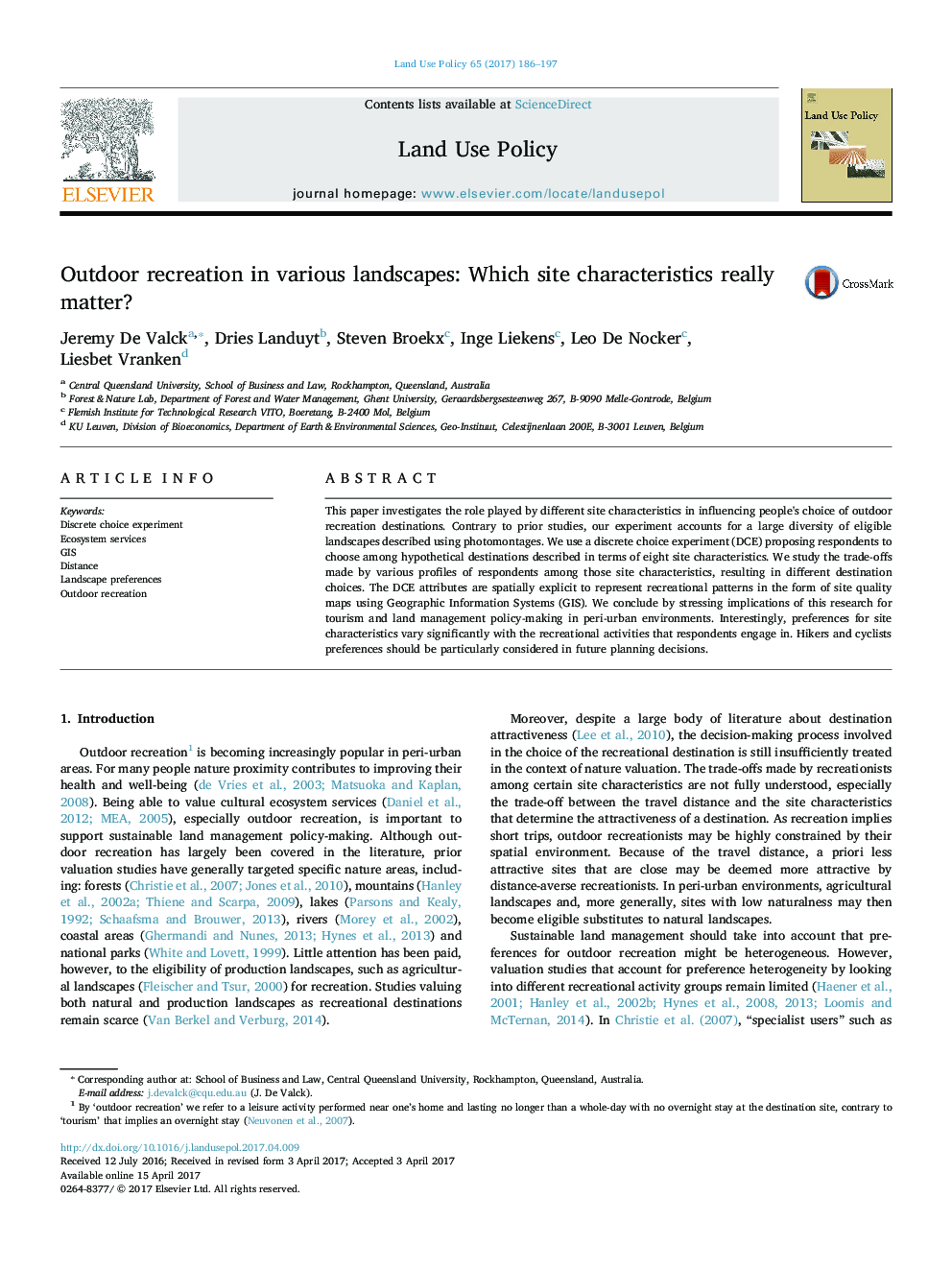| کد مقاله | کد نشریه | سال انتشار | مقاله انگلیسی | نسخه تمام متن |
|---|---|---|---|---|
| 6461144 | 1421818 | 2017 | 12 صفحه PDF | دانلود رایگان |
- We investigate the critical characteristics influencing the decision to recreate at one site relative to another substitute site.
- We elicit preferences using a distance-based discrete choice experiment.
- Photomontages are used to depict landscape openness, naturalness and diversity.
- GIS-explicit attributes are used to create site quality maps.
- We produce outdoor recreation site quality maps for different profiles of recreationists.
This paper investigates the role played by different site characteristics in influencing people's choice of outdoor recreation destinations. Contrary to prior studies, our experiment accounts for a large diversity of eligible landscapes described using photomontages. We use a discrete choice experiment (DCE) proposing respondents to choose among hypothetical destinations described in terms of eight site characteristics. We study the trade-offs made by various profiles of respondents among those site characteristics, resulting in different destination choices. The DCE attributes are spatially explicit to represent recreational patterns in the form of site quality maps using Geographic Information Systems (GIS). We conclude by stressing implications of this research for tourism and land management policy-making in peri-urban environments. Interestingly, preferences for site characteristics vary significantly with the recreational activities that respondents engage in. Hikers and cyclists preferences should be particularly considered in future planning decisions.
Journal: Land Use Policy - Volume 65, June 2017, Pages 186-197
